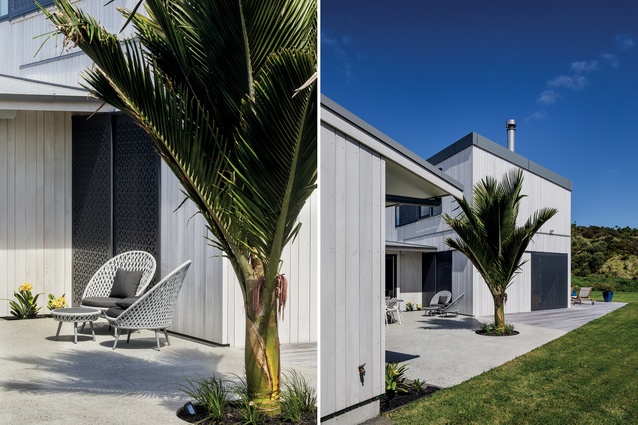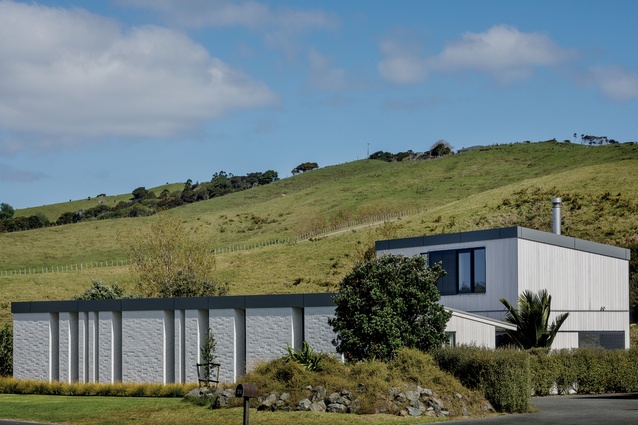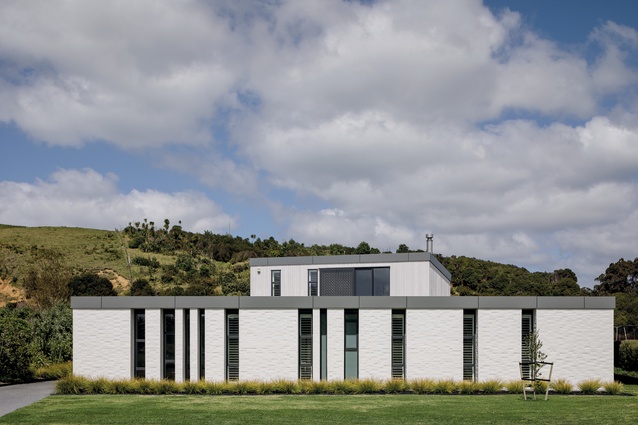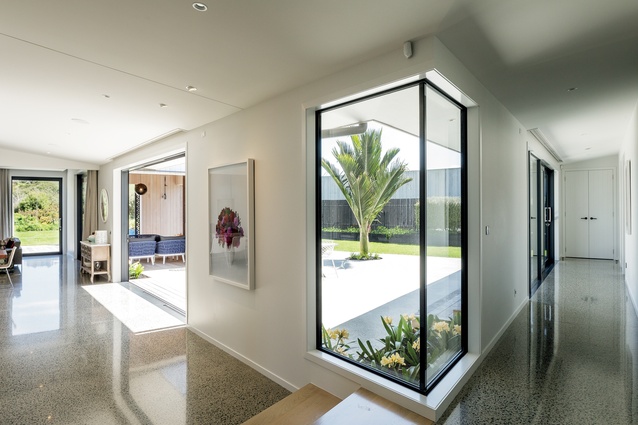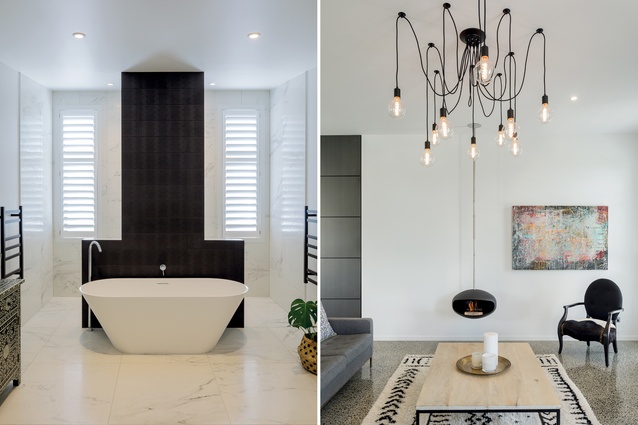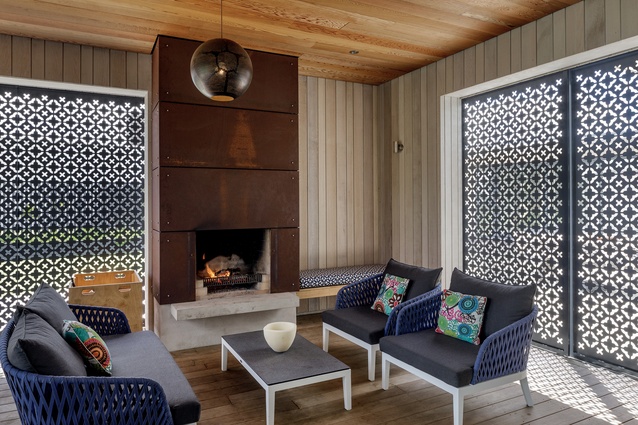Permanent holiday: Omaha House
A textured brick wall along the street front allows privacy and quiet for the owners of this beach house, who hope to make it their full-time residence in the future.
City living has its drawbacks so many urban folks have dreams of retiring at the beach or somewhere far away from the hustle. Omaha Beach is a popular holiday destination for Aucklanders, thanks to its close proximity to the city and, for the owners of this beach house, a couple with teenaged children, it is where they hope to settle down.
When the homeowners engaged architect Rich Naish of RTA Studio, they were looking for a house that could transition between being a beach escape for the whole family to being a permanent residence for the parents, with visitors coming and going, to being a place that, potentially, could accommodate grandchildren.
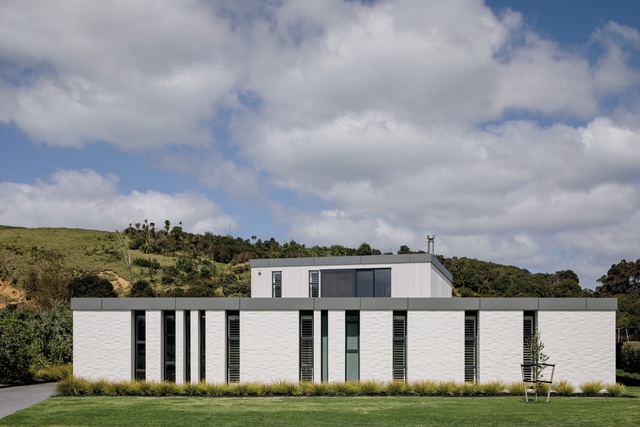
“They hadn’t decided on their site when they came to talk to us,” says Naish. “There was a smaller site closer to the water or this one further back. But, with Omaha, if you’re not right on the waterfront, then you end up being in a kind of suburbia. This site is opposite a reserve, with a distant view of the sea from the upper level. There is a rural feel about it as it opens up to landscape to the south. There was the opportunity for the house to spread out a bit.”
The site is on a main road so the architects created an internal courtyard to maximise privacy in the outdoor spaces and placed the bedrooms along the street front, with the wall of the bedrooms doubling as the external wall for the house. “The idea was to push the house forward to the road,” says Naish.
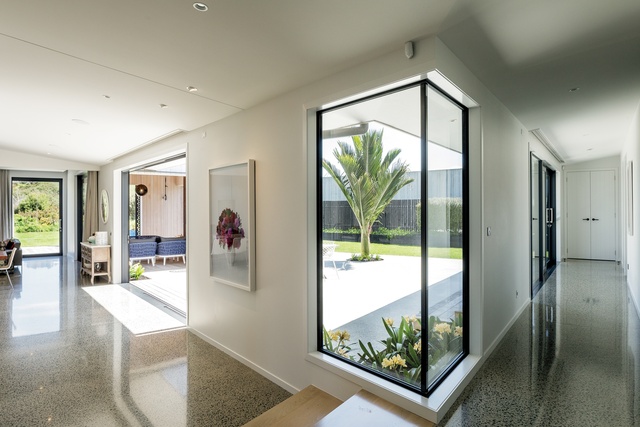
“The plan is in the shape of a Z and, in one of the folds of the Z, is the courtyard. The configuration of that Z makes a pinch-point where the driveway goes in so, in a sense, there is a driveway courtyard that opens to the street and a family courtyard that opens to the rural view to the south-west. We were able to play with the ideas of private and public space in this way.”
The house is double glazed to a high level of specification and the windows along the brick wall are like slots, allowing light in but preventing the gaze of passers-by. The master bedroom sits above the living area on the upper floor with a view to the sea. This gives some separation between the homeowners’ quarters and the other bedrooms.
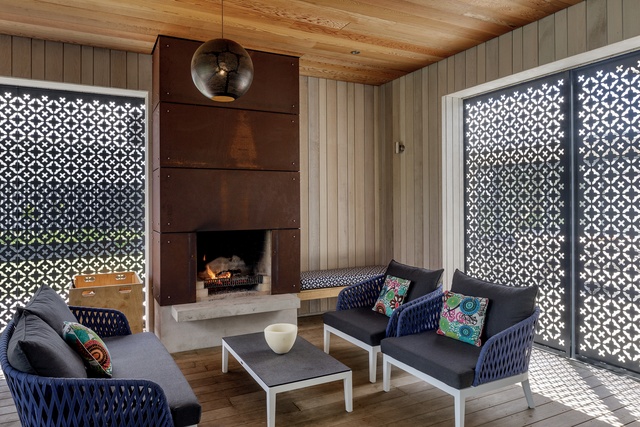
The communal areas are designed with the relaxed tones of a beach house, with sliding doors connecting indoor spaces with the outdoors, and an easy relationship between kitchen and dining zones. An outdoor room, clad in timber like an old bach, provides a sheltered space in which to enjoy the warmth without being exposed to wind, rain or sun. This space also makes use of the RTA signature metal filigree screening; it features a Moroccan pattern, which was chosen by the homeowners’ daughter.
To match the white-painted, bagged brick wall out front, the rest of the house is clad in white-stained cedar. At night, the brick wall is illuminated with uplights, creating an arresting effect of light and shadow.

Material Selector
Architect Rich Naish talks about the use of brick in the Omaha House.
Why did you choose brick for the front façade?
Among the houses in Omaha, there is a real ‘who’s who’ of architecture. The house next door to this one is by David Ponting. It has a concrete lower level and a copper upper level. We wanted to design a masonry house that would sit nicely alongside it in the streetscape. We lined up our façade with his to create a dialogue – like a textural connection with the house next door.
The choice of brick related to the pre-cast concrete in the Ponting house; it was painted white so it would get that lovely dappled light across it in a way that is almost Mediterranean. This was our first brick house and it was a good choice of material for the story of setting up a protection against the street. It is a compositional feature of the front elevation: like a fortification in terms of the more casual environment that occurs behind the wall.
How did you create the textured surface with the bricks?
The client’s office is walking distance from ours and he asked his bricky to set up some brickwork in the car park to play around with, making the bricks purposefully randomised, then bagging and painting them in different ways. We created different mock-up samples to fine-tune it.

